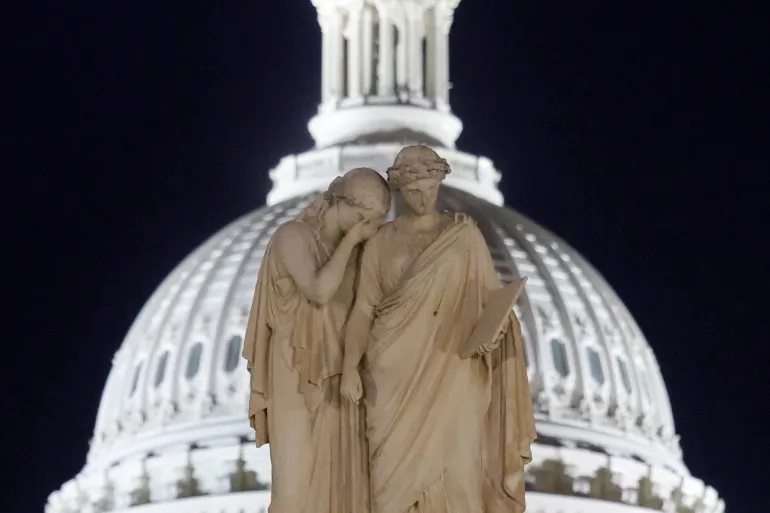WASHINGTON — The United States government entered a shutdown at 12:01 a.m. Wednesday after Senate Democrats and Republicans failed to agree on a short-term funding bill, halting non-essential federal operations and furloughing hundreds of thousands of employees nationwide.
The shutdown, which coincides with the start of the new fiscal year, stems from deep partisan conflict over Medicaid cuts introduced under President Donald Trump’s “One Big Beautiful Bill.” Republicans, despite controlling both chambers of Congress, were unable to unify support for their temporary funding plan that would have kept government operations running until November 21. Democrats refused to back the bill unless Medicaid reductions were reversed, leaving Congress at an impasse.
As a result, approximately 750,000 federal employees will be furloughed daily, according to the Congressional Budget Office (CBO), resulting in an estimated $400 million in lost wages each day. “Excepted” staff — including FBI and CIA agents, federal law enforcement, air traffic controllers, and two million active-duty military personnel — will continue working without pay until the shutdown ends.
The impact extends across agencies. While Social Security, Medicare, and Medicaid continue under mandatory funding, services such as the Internal Revenue Service (IRS), the Small Business Administration, and the Federal Emergency Management Agency (FEMA) face disruptions and reduced staffing. Courts warn they could run out of operating funds within days. The U.S. Postal Service remains unaffected, as it is funded independently.
This is not the first shutdown under Trump’s presidency. A record-breaking 35-day closure in late 2018 paralyzed nine departments, forcing many workers to rely on loans, family support, and food banks. With the White House warning agencies to prepare for mass layoffs beyond furloughs, unions and advocates caution the stakes are even higher this time.
President Trump, meanwhile, has suggested that the shutdown could be used to “get rid of a lot of things we didn’t want,” signaling potential moves to target programs and agencies he has criticized as “Democrat” priorities. Analysts warn this could include attempts to dismantle departments such as Education, the Environmental Protection Agency, or civil rights enforcement offices.
Financial markets, anticipating the shutdown, remained steady on Tuesday. The Dow Jones, S&P 500, and Nasdaq all closed slightly higher. Still, economists caution that prolonged uncertainty could harm consumer confidence and slow economic growth if negotiations drag into the crucial holiday season.
As of now, neither side shows signs of compromise. Democratic leaders Chuck Schumer and Hakeem Jeffries have pledged not to yield to what they call intimidation tactics, while Trump insists Democrats bear the blame. With no resolution in sight, the American public faces both the immediate human cost of unpaid workers and the broader risk of long-term disruptions to government services.

